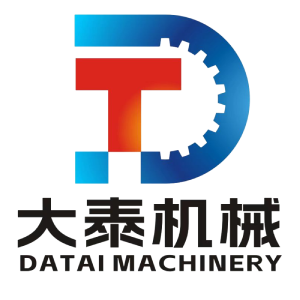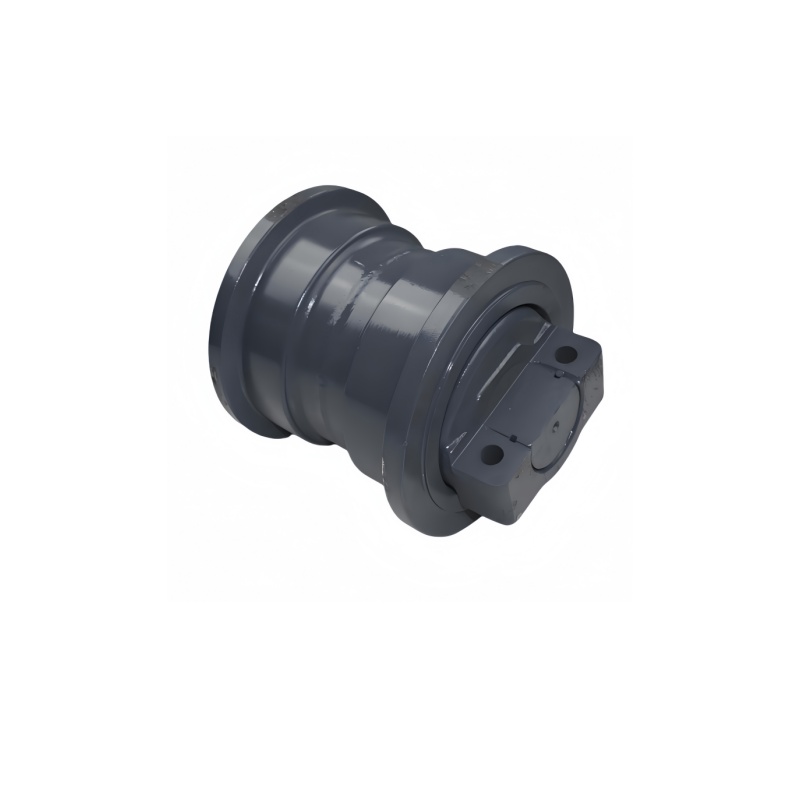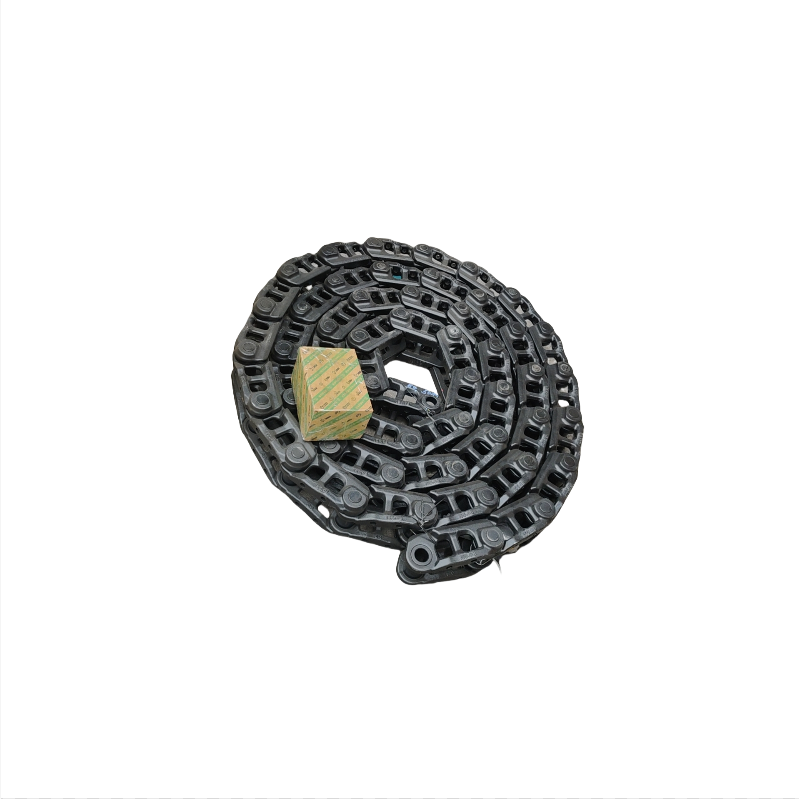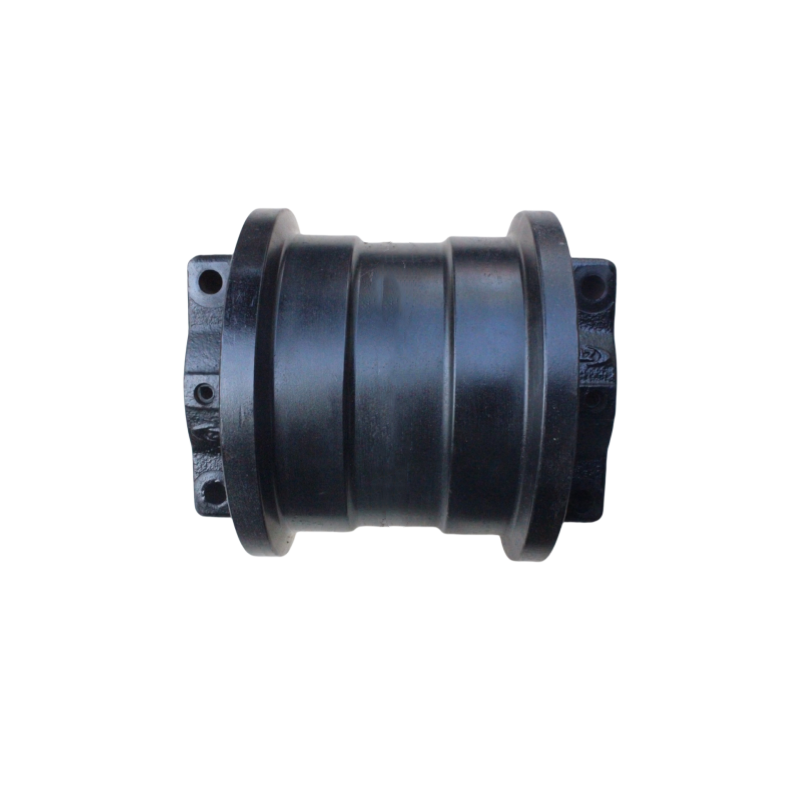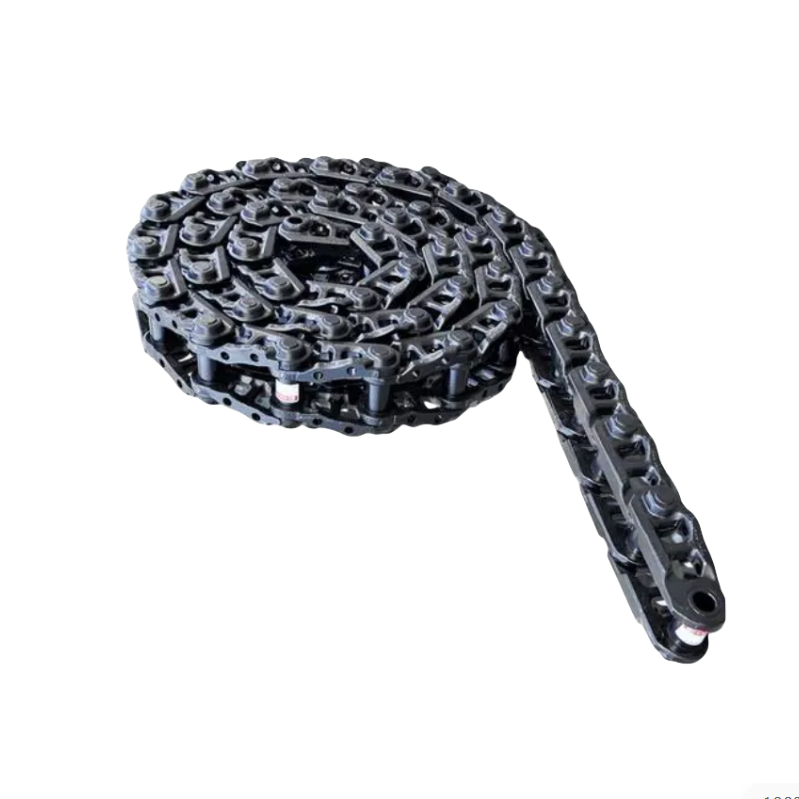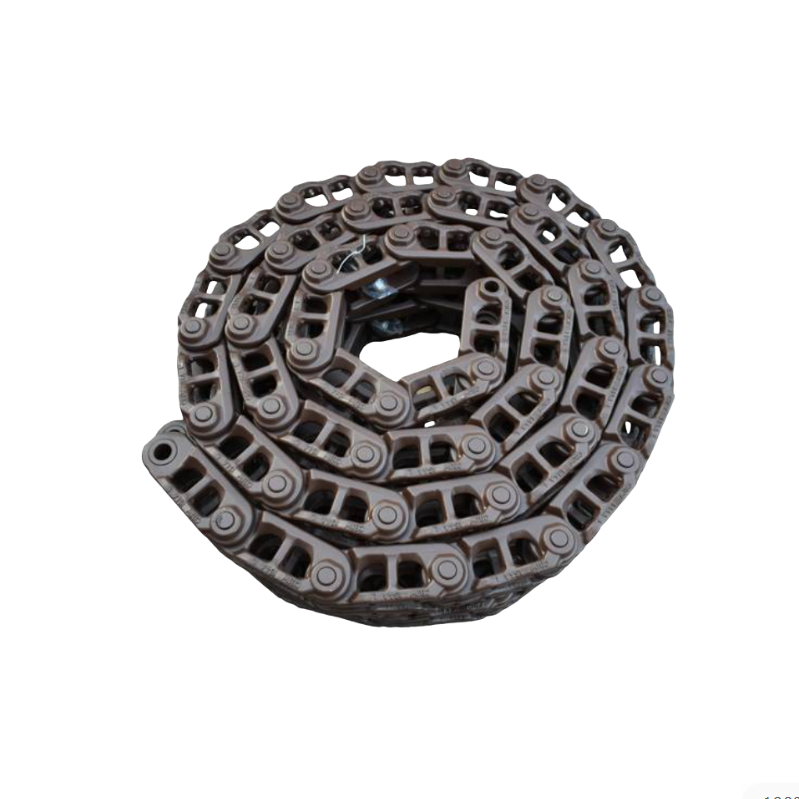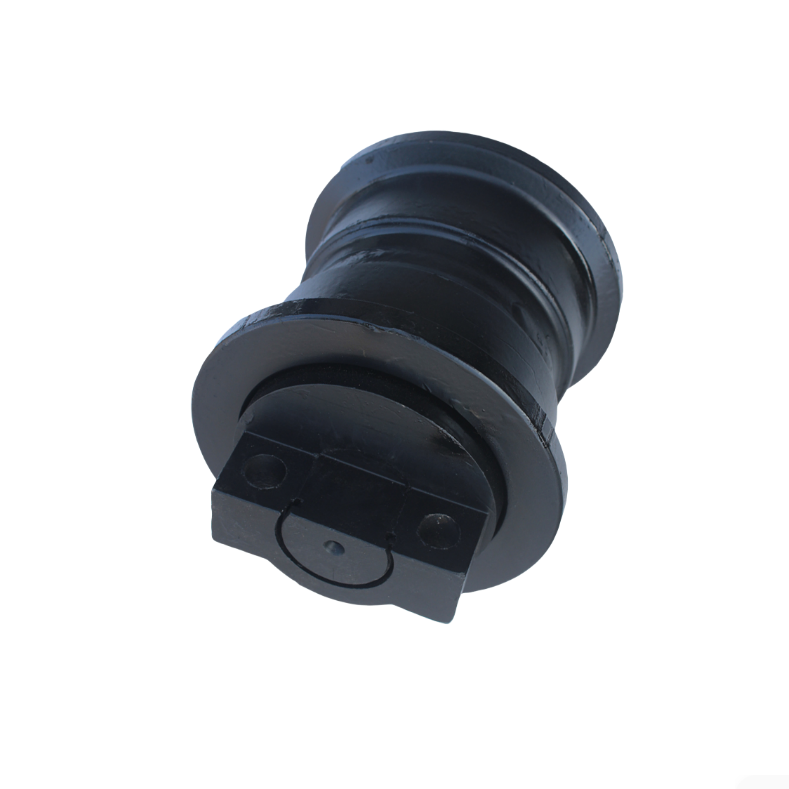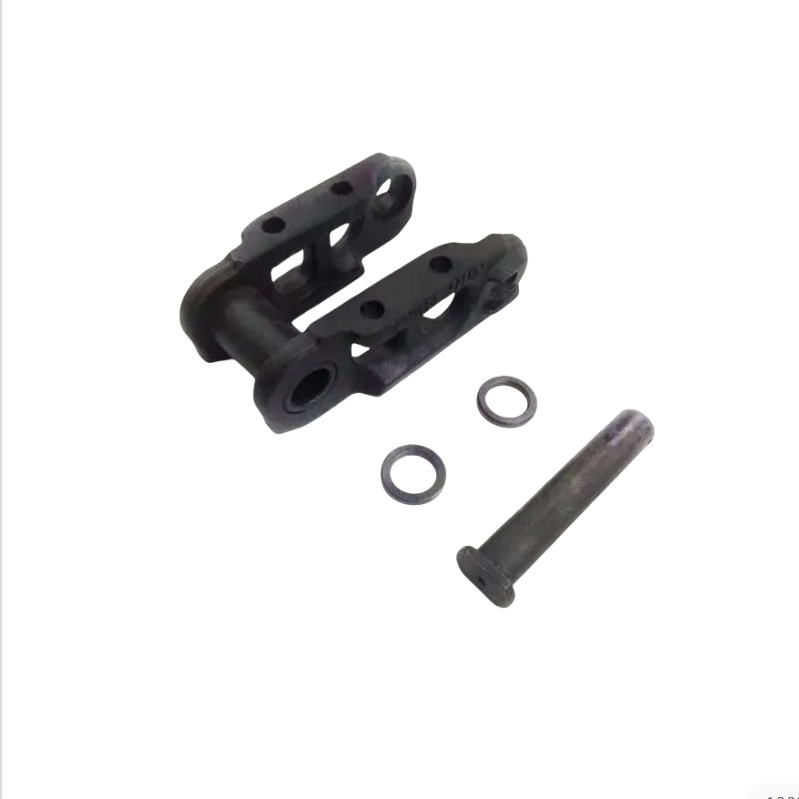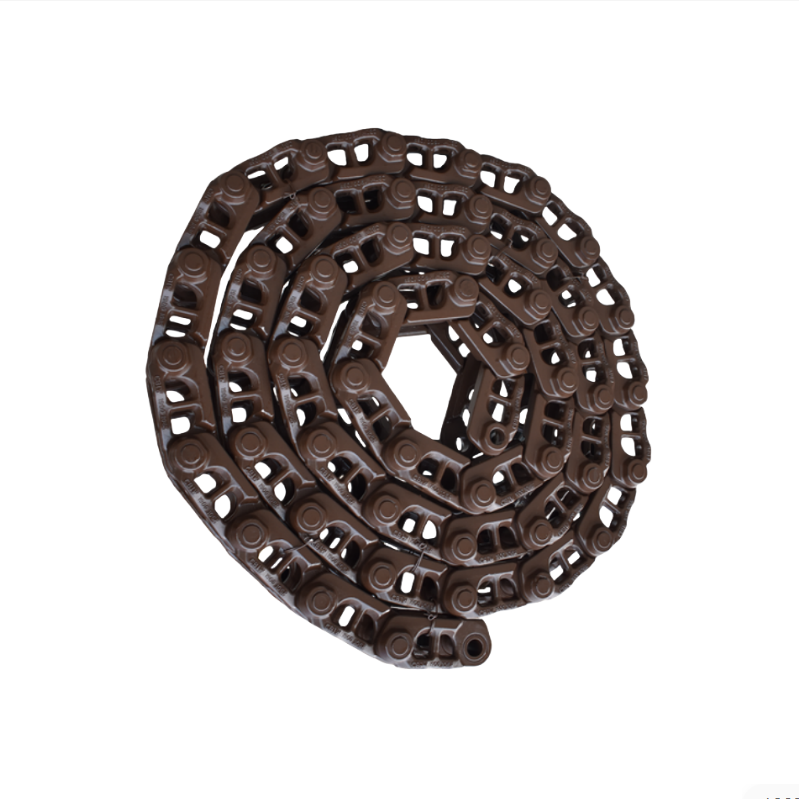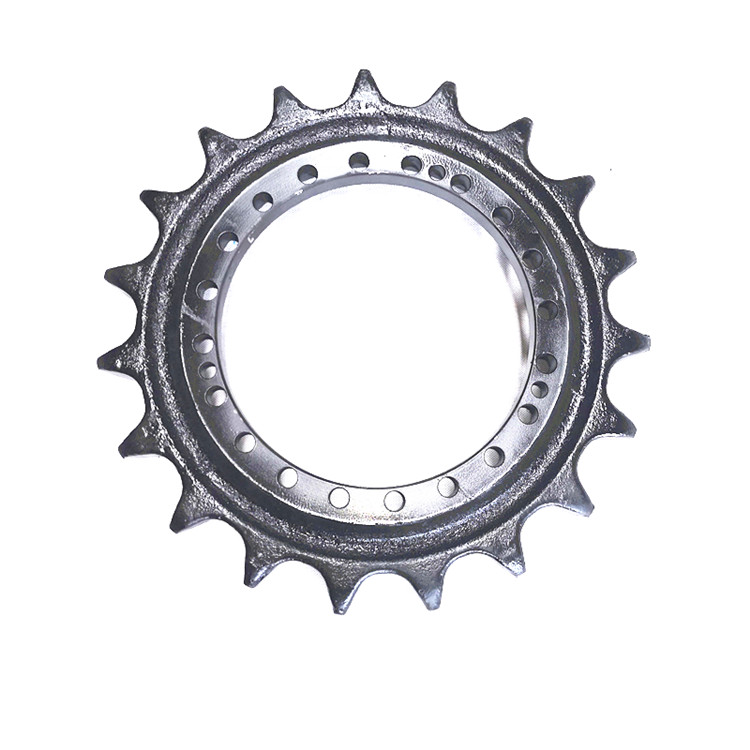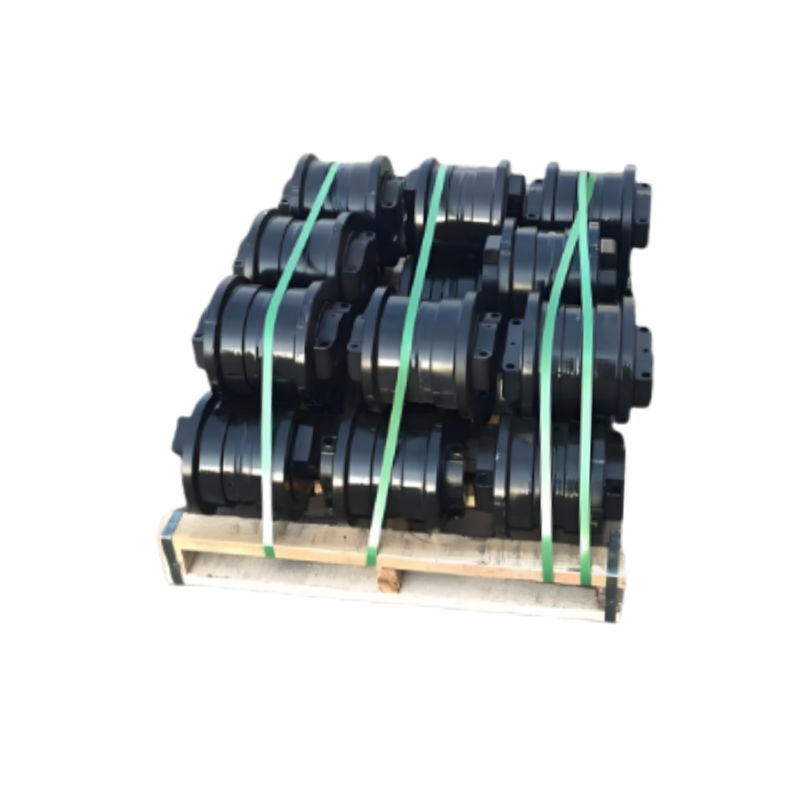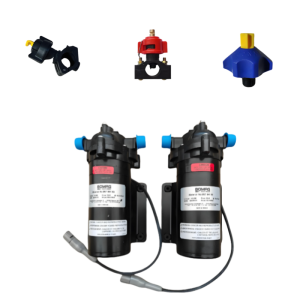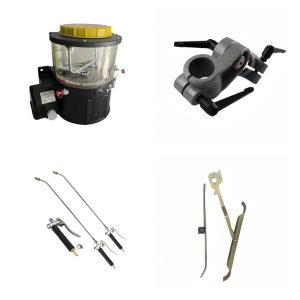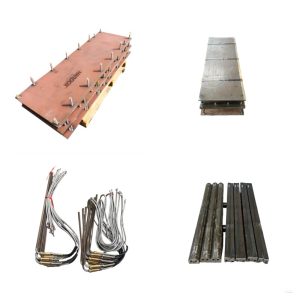- Function and Features
Power transmission: Convert the torque of the hydraulic motor or reducer into linear motion of the track, driving the paver to move forward, backward, or turn.
Load capacity: Supports the weight of the entire machine (usually tens of tons) and disperses grounding pressure to reduce damage to the road surface.
Wear resistant and impact resistant: Suitable for high-temperature, dusty environments in asphalt paving conditions, as well as frequent start stop and turning impact loads.
Anti slip design: The surface of the chain link often has raised patterns or is equipped with rubber pads to enhance adhesion during wet or sloping operations. - Main structural components
Component Description
Chain links (chain plates) are forged from high-strength alloy steel and undergo heat treatment (such as quenching) to enhance hardness and tensile strength.
The pin shaft and bushing are precisely matched to reduce friction, and some parts use self-lubricating bearings or graphite bushings.
Rollers reduce the wear of track shoes and chain links, and some are designed with sealed dust prevention.
The track shoes directly contact the ground and can be made of steel (wear-resistant) or rubber (protecting the road surface).
The tensioning device adjusts the tightness of the chain to avoid over loosening (chain detachment) or over tightening (accelerated wear). - Types and Applicable Scenarios
Type characteristics Applicable scenarios
Standard steel chains have high load-bearing capacity, wear resistance, but high noise. Conventional asphalt paving and heavy-duty working conditions.
Rubber track chains reduce damage to the road surface and reduce noise. Fine paving of municipal roads and already laid grassroots.
The widened chain has a large grounding area and prevents sinking. Soft foundation and wetland construction.
Sealed lubrication chain with built-in grease to extend its lifespan. Dusty and high humidity environment. - Key technical parameters
Pitch (such as 173mm, 216mm): The center distance between adjacent pin shafts of the chain affects the smoothness of transmission.
Breaking force (e.g. ≥ 800kN): reflects the maximum load-bearing capacity of the chain.
Track shoe width (such as 300mm, 500mm): determines the grounding pressure and slip resistance.
Applicable models (such as Vogler S series, XCMG RP series). - Maintenance and common faults
Routine maintenance
Lubrication: Regularly inject high-temperature grease (such as every 50 hours), with a focus on the pin shaft and bushing.
Cleaning: Remove adhered asphalt and gravel to prevent sticking.
Tension check: The sag is usually 20-30 mm (refer to the equipment manual).
Common faults
Rapid wear: Insufficient lubrication or improper tension, check the lining and rollers.
Abnormal noise/jamming: The pin shaft is corroded or impurities enter, and the damaged chain link needs to be cleaned or replaced.
Track deviation: uneven tension or damaged guide wheels, requiring adjustment or calibration. - Selection and replacement suggestions
Matching original specifications: The chain size of different brands of pavers (such as Volvo ABG, Sany Heavy Industry) may vary.
Prioritize the reinforced type: When the paver is operating under heavy loads for a long time, choose chains with coating or carburizing treatment.
Paired replacement: Avoid uneven stress caused by mixing old and new chains.
- Function and Function
Support the weight of the entire machine: bear the self weight of the equipment and the operating load, and distribute the pressure to the tracks.
Guiding track movement: Cooperate with the drive wheel and guide wheel to ensure smooth cyclic rotation of the track.
Reduce friction: Reduce the sliding friction between the track shoes and the chassis structure through rolling contact, and improve energy efficiency.
Buffer and shock absorption: Some designs have shock absorption structures to alleviate the damage of ground impact to equipment. - Structural composition
Track rollers are usually composed of the following components:
Component Description
The wheel body is made of high-strength alloy steel cast or forged, and the surface is quenched to improve wear resistance.
The bearings/bushings adopt needle roller bearings, sliding bearings or sealed lubricated bearings to support the rotation of the wheel body.
The sealing system uses multiple oil seals (such as floating oil seals) to prevent sediment and water from entering, thereby extending its service life.
The supporting wheels in the lubrication channel are designed with oil nozzles for regular lubrication.
The installation bracket is connected to the track frame through bolts or pin shafts and needs to have high torsional strength. - Classification and Types
(1) Classify by location
Unilateral supporting wheel: The wheel body has a single-sided flange, commonly found in lightweight equipment.
Bilateral supporting wheels: The wheels have flanges on both sides for higher stability and are used for heavy machinery such as large excavators.
(2) Classified by Function
Standard supporting wheel: for conventional support, without special shock absorption design.
Buffer supporting wheel: Built in spring or hydraulic shock absorption structure, used for high impact working conditions (such as mining equipment).
(3) Classified by sealing method
Ordinary sealed type: suitable for general working conditions.
Enhanced sealing type: With stronger dust and water resistance, it is suitable for muddy and sandy environments. - Technical features
Wear resistance: The wheel surface is usually subjected to high-frequency quenching or welding wear-resistant layer, with a hardness of HRC50 or above.
Load capacity: Designed according to the tonnage of the equipment, the single wheel load can reach several tons to tens of tons.
Anti corrosion: Galvanized or coated with anti rust paint on the surface, suitable for humid, saline alkali environments.
Low maintenance: Modern support wheels often adopt lifelong lubrication design to reduce maintenance frequency. - Common faults and maintenance
Common faults
Abnormal wear and tear:
Reason: Insufficient lubrication and seal failure caused sediment to enter the bearing.
Performance: Wheel body eccentric wear, rotation jamming.
Oil leakage:
Reason: Oil seal aging or damage.
Performance: Dry grinding of bearings accompanied by high temperature and abnormal noise.
Wheel body crack:
Reason: Overloading or metal fatigue.
Maintenance suggestions
Regular inspection: Check the wear, sealing, and lubrication status of the wheel body every 500 hours.
Timely replacement: If the diameter wear of the wheel body exceeds 5%, it needs to be replaced to avoid derailment of the track.
Clean the track: Avoid the accumulation of gravel and soil, which can worsen the wear of the supporting wheels. - Application scenarios
Earth moving machinery: excavators, bulldozers, loaders, etc.
Road construction equipment: asphalt paver, roller (some tracked models).
Mining machinery: large mining excavators, tracked transport vehicles. - Key selection points
Matching device model: Refer to the size and load-bearing requirements in the original factory manual.
Adaptability to working conditions:
Choose a reinforced sealing type for environments with multiple sand and gravel;
Select buffer support wheels for high impact working conditions.
Brand and Quality: Renowned brands such as Caterpillar, Komatsu, and XCMG have longer service lives for their supporting wheels.
